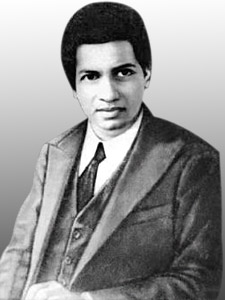The tangram
is a dissection puzzle consisting of seven flat shapes, called tans, which
are put together to form shapes. The objective of the puzzle is to form a
specific shape (given only an outline or silhouette) using all seven pieces,
which may not overlap. It was originally invented in China at some unknown
point in history, and then carried over to Europe by trading ships in the early
19th century. It became very popular in Europe for a time then, and then again
during World War I. It is one of the most popular dissection puzzles in the
world.[
Over 6500 different tangram problems have been
compiled from 19th century texts alone, and the current number is ever-growing.
The number is finite, however. Fu Traing Wang and Chuan-Chin Hsiung proved in
1942 that there are only thirteen convex tangram configurations (configurations
such that a line segment drawn between any two points on the configuration's
edge always pass through the configuration's interior, i.e., configurations
with no recesses in the outline).


You can get more picture from google.


 when
when  and
and  , i.e.
, i.e.
 twice combined with the previous result to produce:
twice combined with the previous result to produce:
